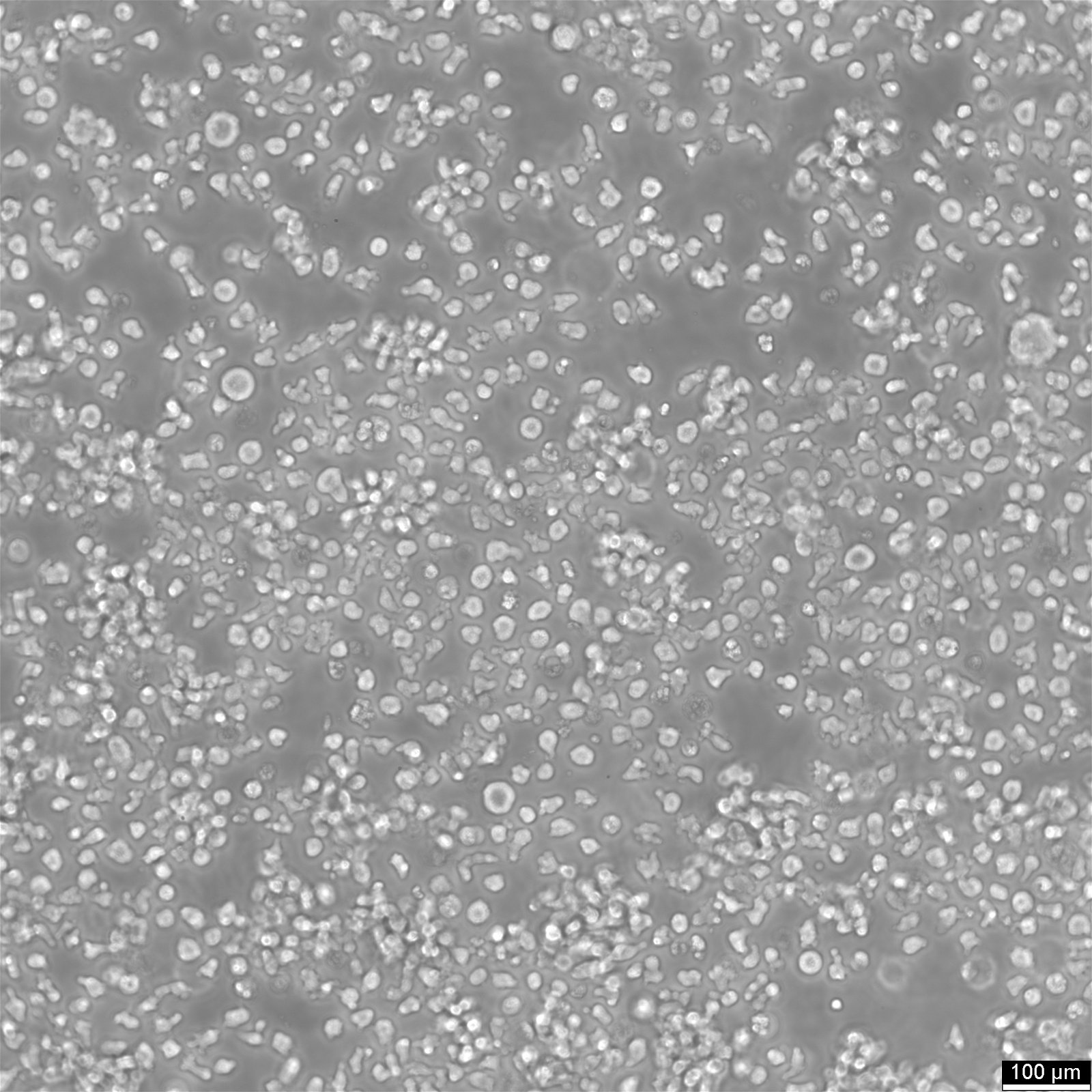H9 Cells
















General information
| Description | Clonal derivative of the T-cell line HUT 78 derived from the blood of a patient with Sezary syndrome. The clone was selected due to its suitability for the isolation and continuous high level production and HIV variants with patients within AIDS and pre-AIDS. |
|---|---|
| Organism | Human |
| Tissue | Blood |
| Disease | Sezary syndrome (aggressive form of cutaneous T-cell lymphoma) |
| Metastatic site | Peripheral blood |
| Synonyms | HT clone H9, HT(H9), H 9, H-9 |
Characteristics
| Age | 53 years |
|---|---|
| Gender | Male |
| Ethnicity | European |
| Morphology | Lymphoblast |
| Cell type | T-cell |
| Growth properties | Suspension |
Identifiers / Biosafety / Citation
| Citation | H9 (Cytion catalog number 300460) |
|---|---|
| Biosafety level | 1 |
Expression / Mutation
| Receptors expressed | CD4+ |
|---|---|
| Protein expression | Interleukin 2 (IL-2) |
| Isoenzymes | AK-1, 0, ES-D, 1, G6PD, B, GLO-I, 1, Me-2, 0, PGM1, 1, PGM3, 0 |
| Virus susceptibility | HIV-1 (HTLV-III) |
Handling
| Culture Medium | RPMI 1640, w: 2.1 mM stable Glutamine, w: 2.0 g/L NaHCO3 (Cytion article number 820700a) |
|---|---|
| Medium supplements | Supplement the medium with 10% FBS |
| Subculturing | Gently homogenize the cell suspension in the flask by pipetting up and down, then take a representative sample to determine the cell density per ml. Dilute the suspension to achieve a cell concentration of 1 x 10^5 cells/ml with fresh culture medium, and aliquot the adjusted suspension into new flasks for further cultivation. |
| Freeze medium | CM-1 (Cytion catalog number 800100) or CM-ACF (Cytion catalog number 806100) |
| Handling of cryopreserved cultures |
|
Quality control / Genetic profile / HLA
| Sterility | Mycoplasma contamination is excluded using both PCR-based assays and luminescence-based mycoplasma detection methods. To ensure there is no bacterial, fungal, or yeast contamination, cell cultures are subjected to daily visual inspections. |
|---|---|
| STR profile |
Amelogenin: x,y
CSF1PO: 11
D13S317: 8,12
D16S539: 11,12
D5S818: 11
D7S820: 8,11
TH01: 8,9
TPOX: 8,9
vWA: 14,15
D3S1358: 15,16
D21S11: 30
D18S51: 18
Penta E: 13,15
Penta D: 9
D8S1179: 12,14
FGA: 21,25
D6S1043: 12
D2S1338: 20,25
D12S391: 18,23
D19S433: 14
|
